What are the Red Mushrooms in Rhode Island?
Finding the red mushrooms in Rhode Island or the East was not as easy as I thought. Some are edible, others are poisonous, and plenty of them don’t show appear often.
That’s why I created a list of the 10 Red Mushrooms in Rhode Island!
This ultimate guide will give you the red mushrooms in Rhode Island, how to identify them, and even where to find them in your yard.
***DISCLAIMER***
This article is intended to be for entertainment purposes only. There are similar-looking types of mushrooms that can be poisonous to humans and animals.
Do not use this as a guide to forage mushrooms. Do not use this as a guide to prepare, cook, and eat mushrooms.
You should work with your local mycological society, foraging experts, and local community clubs for identifying, foraging, and potentially eating mushrooms. In addition, you should never forage mushrooms on your own or use this guide to assist you in foraging mushrooms.
Read THIS Before Identifying Red Mushrooms
Knowing the type of red mushroom growing in your yard can be the difference between a fascinating hobby that can result in a nutritious and edible food source and a deadly toxin. Always make sure to work with your local city and gardening club before eating mushrooms found in the wild.
It is important to pay close attention to the following when picking or eliminating mushrooms in your yard:
- The size, including the cap, gills, scales, spores, and stem.
- The color, including the cap, gills, scales, spores, and stem.
- Location, both in the United States and in your yard
- Odor and even taste
And if you want to learn more about common mushrooms that grow in your yard watch the below video!
10 Red Mushrooms in Rhode Island
#1. Ringless Honey Mushroom (Armillaria Tabescens)
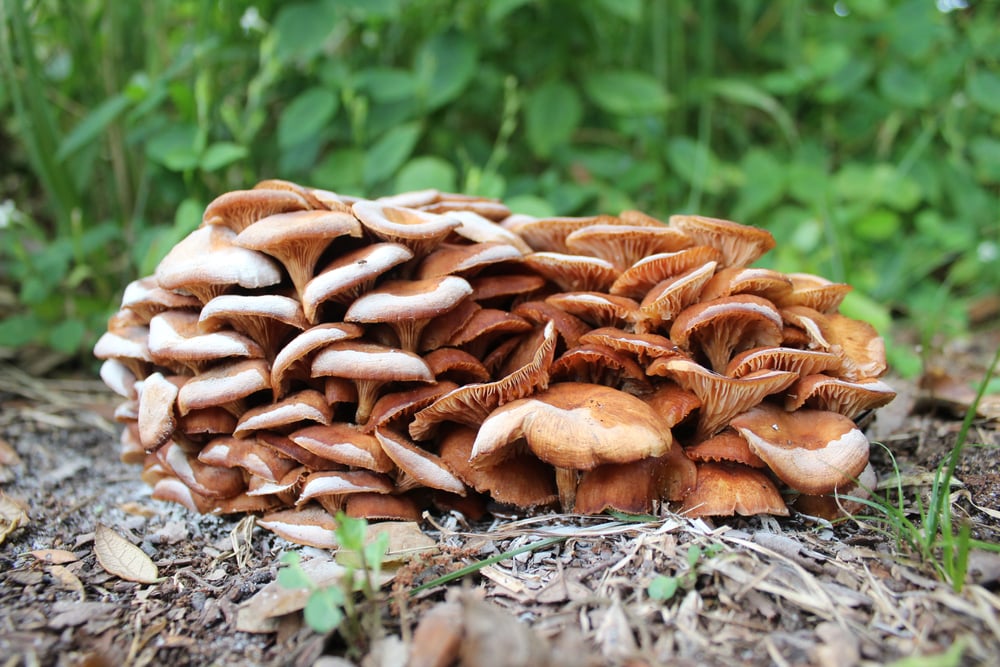

Specifications:
- The Ringless Honey Mushroom has a red, golden, honey-colored cap, white spores, narrow to broad pinkish/brown gills, and thick, cluster stalks.
- This type of mushroom grows from late summer to early winter throughout the United States, including Rhode Island.
- It is important to kill these mushrooms when you see them as they will attack and kill trees by depleting them of water and nutrients. They are considered parasitic fungi.
- An interesting fact is that the ringless honey mushroom actually grows underneath the ground, rather than on top of it. The best way to get rid of this mushroom is from its roots beneath the ground!
#2. Chicken of the Woods (Laetiporus sulphureus)


Specifications:
- The Chicken of the Woods Mushroom has a creamy red/orange cap, white spores, thick and short creamy yellow stalks, and dark yellow gills.
- This type of mushroom grows from early summer to winter in the United States, Ireland, Britain, and Southern Europe.
- The Chicken of the Woods Mushroom can be found in Rhode Island, the United States, and throughout Southern Europe. You will find it as a pest in forests on dead and dying trees. Once they grow and spread it is very hard to get rid of them.
- There are other types of similar mushroom species to the Chicken of the Woods Mushroom that will grow in Europe. An interesting fact about this type of mushroom is that its pores turn black when bruised.
#3. Fly Agaric Mushrooms (Amanita muscaria)
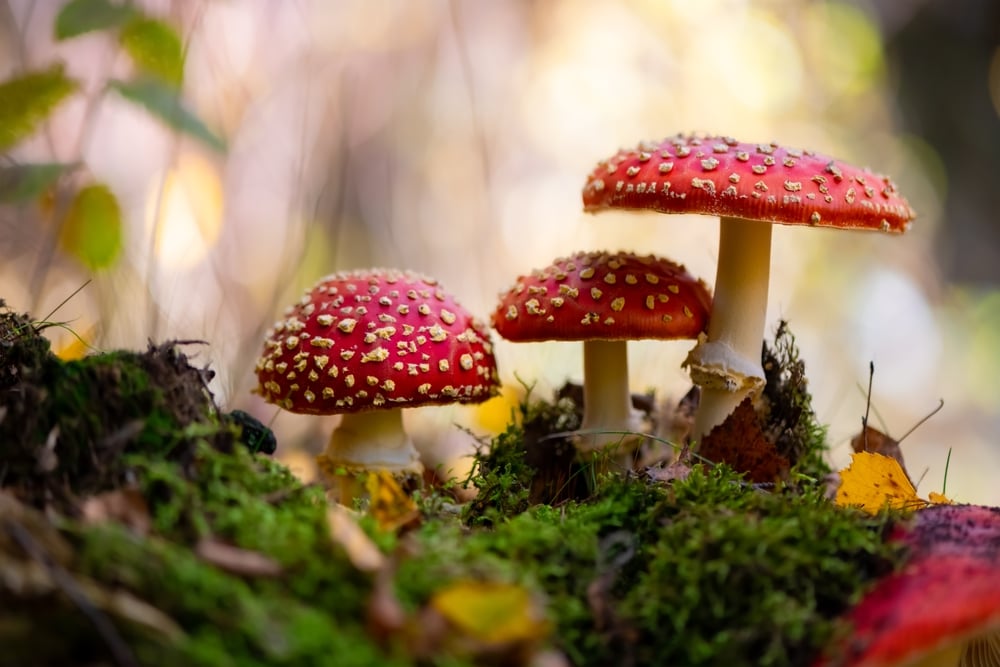

Specifications:
- The Fly Agaric Mushroom has a deep red and red cap, white spores, narrow white stalks, and white to pale yellow gills.
- This type of mushroom grows from late summer to late fall throughout the world, including United States, Ireland, and Britain.
- You should kill these mushrooms unless you want them to be a natural pesticide or herbicide in your yard. This mushroom is common in Rhode Island and will grow on hardwood, including spruce, birch, and pine trees.
- The Fly Agaric Mushroom is the type of mushroom you will typically see and read about in fairy tales and will even see in fairy gardens across the world.
#4. Morels Mushrooms (Morchella esculenta)
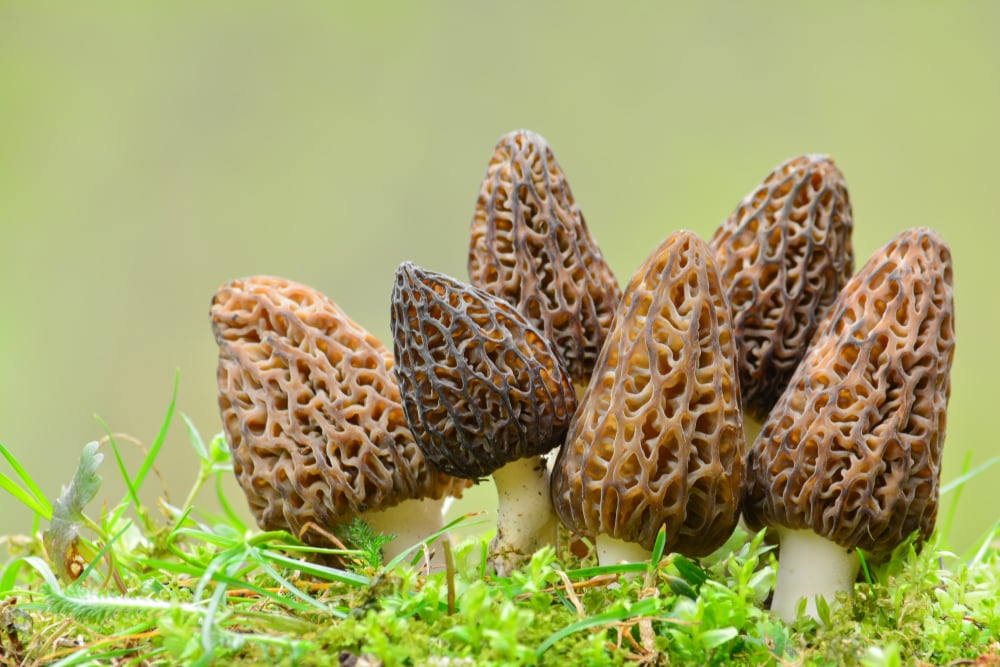

Specifications:
- The Morel Mushroom has numerous colors including red and a yellow and brown flesh red cap, white spores, thick white or pale cream stalks, and brown gills.
- This type of mushroom grows from spring to early fall in the United States. While it can also be found in Ireland and Great Britain, it is much rarer.
- You can leave the Morel Mushroom in your yard and even pick them up. This mushroom is considered symbiotic with its environment and can be found under trees and sometimes on trees. They are considered a beneficial partner with trees and insects won’t harm them either!
- Did you know that the Morel Mushroom is one of the few mushrooms you can grow in your very own home?
#5. Haymaker Mushroom (Panaeolus foenisecii)
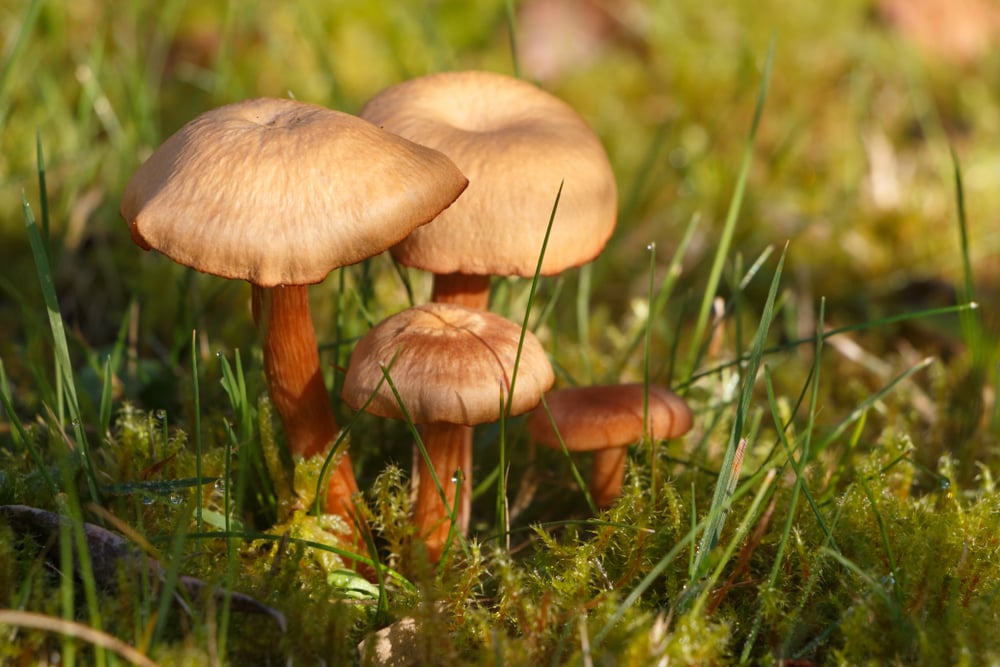

Specifications:
- The Haymaker Mushroom has an Red and Brown cap, white spores, thin, small brown stalks, and brown gills.
- This type of mushroom grows from spring to early winter in Rhode Island and the United States. It can also be found throughout the Northern Hemisphere of the world.
- The Haymaker Mushroom is the most common yard mushroom. You can expect it whether you mow or fertilize your law. You will find this mushroom in grassy areas!
- The Haymaker’s Mushroom is also known as the Mower’s Mushroom as this is a common yard mushroom seen when mowing or tending to one’s lawn.
#6. Jack O Lantern Mushroom (Omphalotus olearius)


Specifications:
- The Jack O Lantern Mushroom has a Red and Yellow cap, white spores, thick, orange and dark yellow stalks, and dark red and orange gills.
- This type of mushroom grows from early fall to winter in the United States, Ireland, Britain, and Southern Europe.
- The Jack O Lantern Mushroom can be found in Rhode Island, the United States, and throughout Southern Europe. You will find it under trees in shaded areas, but should not be foraged.
- There are other types of similar mushroom species to the Jack O Lantern Mushroom that will grow in Europe. Regardless of the specific type, they have similar characteristics and should be treated the same way.
#7. Chanterelle Mushroom (Cantharellus cibarius)
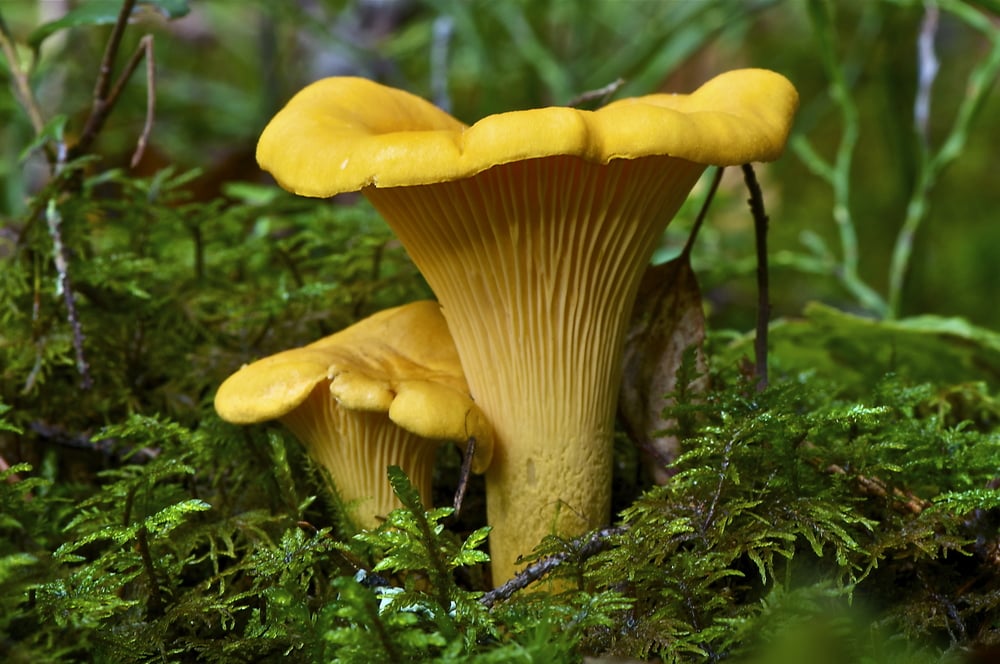

Specifications:
- The Chanterelle Mushroom has a red cap, white spores, thick, orange stalks, and dark red gills.
- This type of mushroom grows in the fall in the United States, Ireland, Britain, and Southern Europe.
- The Chanterelle Mushroom can be found in Rhode Island, the United States, and throughout Southern Europe. You will find it by ivy in conifer forests.
- This can be a tougher mushroom to find in forests but is one of the few fall-only mushrooms in Rhode Island as the temperatures get cooler.
#8. Deadly Galerina Mushroom (Galerina marginata)
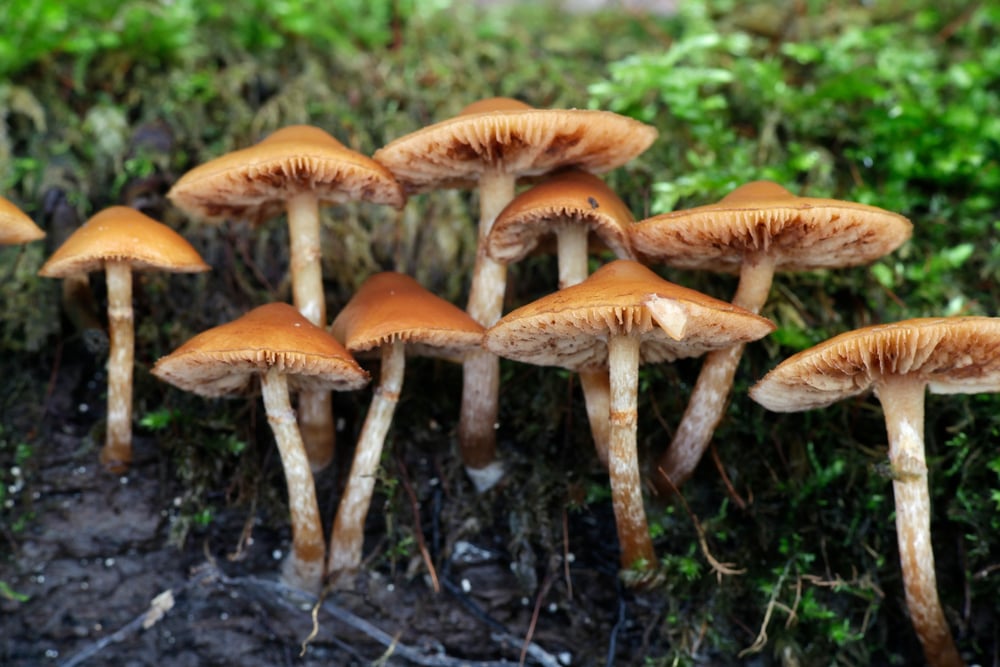

Specifications:
- The Funeral Bell Mushroom has a red and honey yellow and brown cap, brown spores, tall and thick brown stems, cream gills.
- This type of mushroom grows from summer to fall in the United States, Ireland, and Britain.
- The Funeral Bell Mushroom can be found in yards in Rhode Island and the United States. You will find them in Stumps, Dead Trees, Broken Branches, and sometimes even dead leaves in the fall.
- It should be noted that even though the Funeral Bell Mushroom typically grows in the summer and fall in Rhode Island, it some parts of the United States it can grow any time of the year!
#9. Fairy Ring Mushroom (Marasmius Oreades)


Specifications:
- The Fairy Ring Mushroom has a white, cream cap, white spores, narrow to broad red/white/brown gills, and thin stalks.
- This type of mushroom grows from late summer to early winter throughout the United States, including Rhode Island.
- An interesting fact is that the fairy ring will form perfect circles where they grow, but this may change depending on the amount of foot traffic by humans or animals.
- This mushroom can be found in fairy tale books.
#10. Deadly Webcap (Cortinarius rubellus)
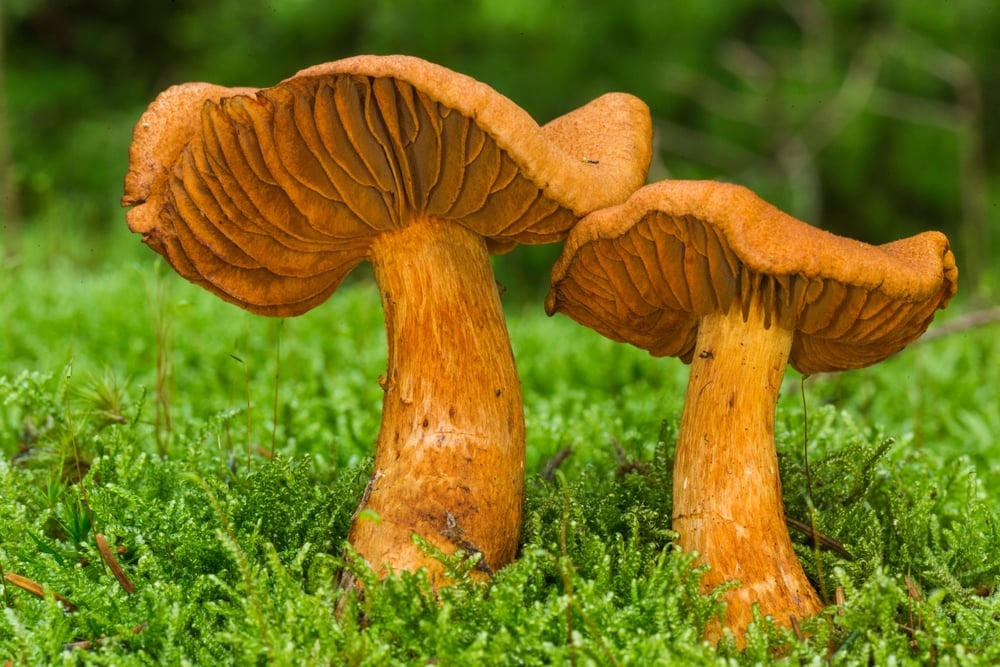

Specifications:
- The Deadly Webcap Mushroom has an red and tawny brown cap, brown spores, tall and thick yellow stems, and tawny brown gills.
- This type of mushroom grows from summer to winter in the United States, Ireland, and Britain.
- The Deadly Webcap Mushroom can be found in yards in Rhode Island and the United States. You will find them under pine and spruce trees and in damp soil.
Common Factors of Red Mushrooms

As a reminder, the below factors of red mushrooms
- Most are parasitic to humans and should not be consumed.
- These mushrooms can be found throughout your yard, but most commonly on trees and in wet areas of your yard.
- Each mushroom on this list has a common fungus relative that it can be mistaken for. Leverage this guide to have the best chance of identifying common yard mushrooms in Rhode Island.
- Most mushrooms on this list will only grow a maximum height of 6 inches tall and 3 or 4 inches wide.
- A majority of the mushrooms on this list will have no smell to them.
And remember that you should pay attention to this guide, other local experts, and your local mushroom clubs before foraging. This can be the difference between a nutritious and delicious mushroom and a harmful and even deadly fungus.
If you want to learn about other mushrooms, chickens, vegetables, fruits, herbs, and bees check out thegardeningdad and search for the plant you want to grow in the upper right-hand corner.